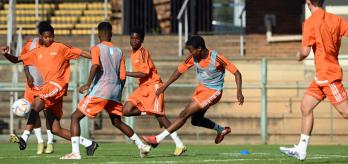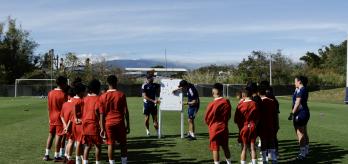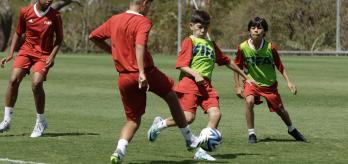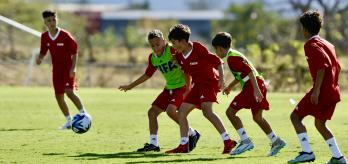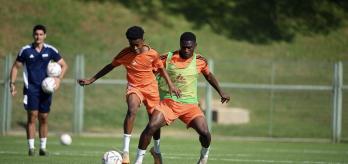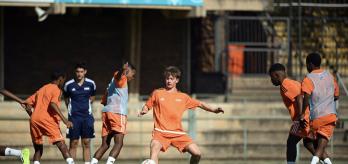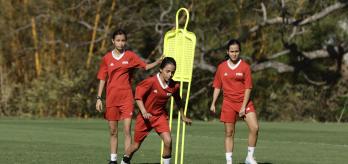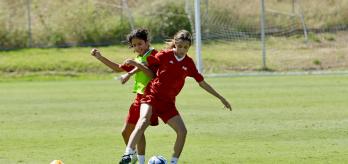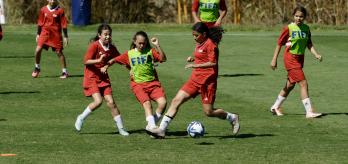Methodology
The intention: What is practised?
This small-sided game replicates a high press against the opposition’s build-up from the goalkeeper, aiming to refine a team’s defensive shape in these scenarios. The defensive unit must organise their shape before the opposition have started their build-up, with some players pressing from the front and others covering the press and denying passes through the centre. The defensive unit can maintain a compact shape by coordinating which player/space will be pressed by each player. Due to the numerical disadvantage, the defensive unit must communicate well to decide when to pass on a player and recognise when to shift across to cover the most dangerous areas. Once the defending team gains possession, they must play aggressively towards the goal and attempt to score.
The scale: For whom is this relevant?
This exercise revolves around the unit scale, focusing on defensive movement and positioning when pressing the opposition’s build-up using four players. The drill is particularly relevant to the first two lines of the high press, which could resemble a front three or a front two with central midfielders ready to spring forward from behind should the first line be broken. The scenario focuses on central areas – wingers and wide play are therefore irrelevant – although the requirements of players in both the press and in build-up play could make the exercise position-specific.
The practice type: How is the practice designed?
This exercise involves a small-sided game on a reduced-size pitch in the shape of a narrow channel between two goals. Due to the narrow and reduced playing area constraints, players are limited to a central scenario, which should encourage the pressing team to stay well organised and time their pressing actions effectively. The neutral players and the goalkeepers create a numerical advantage, which encourages the defending team to stay compact and press intelligently as a unit. The nature of the exercise helps the defending team to spring into attack when they win the ball, since the goal should always be in close proximity. The time limit is established to provide both sets of players with the opportunity to practise both elements of the drill: pressing and build-up play.
Session plan
Organisation
-
Mark out a 32m x 19m playing area with a full-size goal at each end.
-
Play a 4v4 with 2 neutral outfield players and 2 goalkeepers.
Explanation
-
For a set period of time, the orange players must keep possession using the 2 neutral outfield players and 2 goalkeepers.
-
The blue players must use a coordinated press to steal the ball in order to score in either goal.
-
Teams switch roles when the set period of time is up.
-
Whichever team has possession can use the 2 neutral outfield players.
Key coaching points
Roles of the coaches
-
First coach: explains the exercise to the players and provides them with coaching points.
-
Second coach: observes and corrects defenders’ positioning.
-
Third coach: feeds balls from the side of the pitch and intervenes to add variations.










